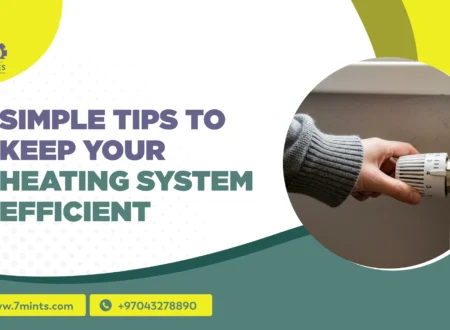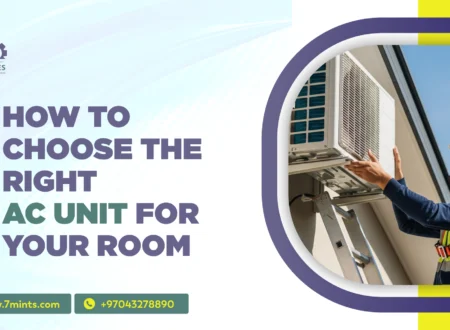When buying a new air conditioner or heat pump, you may encounter the term SEER rating. At first, it may sound like just another technical number. Considering what the term entails might allow one to make a huge difference in energy bills, indoor comfort, and perhaps maintaining the environment. SEER encompasses various aspects that include performance, efficiency, and saving money. In this blog, we’ll delve into how to calculate it, its importance, and factors affecting your decision when choosing an HVAC system.
What Is SEER – A Simple Explanation
It stands for Seasonal Energy Efficiency Ratio. It is a measure of the efficient capacity based on an air conditioner or heat pump. The formula takes into consideration the total cooling output in BTUs (British Thermal Units) converted against the total energy input in watts. Since the rating gives an average over the season, SEER is a realistic and practical parameter describing real-life performance.
The higher the SEER rating, the more efficient the system. The idea is similar to fuel mileage in a car: the more miles per gallon, the more efficient the car. So, a higher SEER system puts out more cooling per unit of electricity consumed. It aids homeowners in identifying systems that are good performers with less energy consumption, thus saving significant amounts of money and resources.
How Does SEER Rating Impact Energy Consumption
The logic behind a higher SEER rating is to allow a system to consume less power to perform a relatively similar or greater cooling output compared to lower-rated systems. For example, under the same conditions, a 16 SEER air conditioning unit, compared to a 13 SEER unit, consumes considerably less energy to cool the same room. This means that with a higher SEER unit, you are able to reduce your energy footprint while maintaining an acceptable indoor temperature.
If you live in an area with long and upscale summers and rely heavily upon air-conditioning during such times, the nature of the difference in efficiency is going to be an instant cash saving for you. Besides, the more efficient the system, the less the strain on the home’s electrical installation and the higher the reliability score over time. Energy prices are rising higher and higher; it’s a wise choice for the frugal home builder and installer.
Financial Impact: Upfront Cost vs. Long-Term Savings
It is for these reasons that many are hesitant when it comes to getting a high-SEER unit, for these are higher-priced at the front. However, it must be looked at more as an investment than a cost. While more money down the line for such a unit will mean greater initial costs, the high-SEER units present much opportunity to save on energy bills and lower repair needs, and those savings over the life of the system may often outweigh those initial costs.
An upgrade from a SEER 13 may well save thousands of rupees, or hundreds of dollars, per year, depending on your location, just in energy bills, and that doesn’t include rebates or incentives that you may get from your government for energy-efficient upgrade projects, which would further pay you back faster. High-SEER units increase the value of a house and are good selling points to prospective buyers.
Environmental Impact: An Environmental Choice
Energy-efficient systems with great SEER ratings also happen to be friendlier to the environment. Since they are using less electricity for cooling the house, the emitters, so to speak, for greenhouse gases, too. Since the bigger part of electricity generation still depends on fossil fuels, even a little bit of energy saved at home slightly reduces your share in carbon emissions or in air pollution.
Thus, from the point of view of ozone depletion and global warming, high-efficiency systems usually utilize type I refrigerants. They generally consider other environmentally friendly features as well. For example, they may have variable speed compressors, which will run only when needed, thereby cutting down energy usage even further. A high-SEER unit is one step, among many, toward living a bit more sustainably.
SEER Versus Other Efficiency Ratings
The SEER rating is important, but it is not the only one to keep your eyes on. Other ratings like EER, HSPF, and ENERGY STAR certifications also provide worthwhile insights. The EER measures the efficiency of a unit at a fixed outdoor temperature and is more suitable for very hot climates. The HSPF applies to heat pumps and measures their heating efficiency.
To earn the ENERGY STAR label, your air conditioning system must meet the minimum SEER standards and have these ratings tested by independent sources. With additional features like a smart thermostat or enhanced filtration systems, the entire combination becomes an all-encompassing schematic showing the year-round efficiency and performance of your system, measured against its SEER rating.
Choosing a SEER Rating Suited to Your Needs
The best SEER rating for your home depends on many factors: the climate, how often you use it, the size of your home, and your budget. In warmer climates, say in the southern U.S. or the Middle East, where air conditioning is switched on for at least four months through the year, going for a SEER 18 or above unit may spell a lot in terms of savings over time. For cooler climes, it might be a lot cheaper to buy a SEER 14 to 16.
Make sure you factor in how often you’re at home. Working from home or having family members who basically stay most of the day indoors would mean higher air-conditioning time, which would mean buying a high-SEER unit is worth investing in. Likewise, a poorly insulated home or a really large home square footage could also use such energy-efficient units more to prevent energy waste and maintain near details of stable temperature.
SEER 2: New Test Standards to Know about
In 2023, new standards were introduced in many countries, including the U.S., so that the testing conditions for HVAC systems are more realistic. SEER2 evolved from these, with test methods that take external static pressure into account, simulating the resistance that real ductwork and air flow will offer. That said, SEER2 ratings will tend to be slightly lower but are more accurate.
By 2025, most new HVAC systems should meet these minimum SEER2 standards, usually around 14.3 SEER2, which would be roughly equivalent to 15 SEER under the old rating system. These updated rating systems guarantee your unit will perform as expected under typical installation conditions. Check out our latest blog post on Top Energy-Saving Tips for Your HVAC System
SEER Rating and Comfort Inside the Home
High-SEER units usually have variable-speed compressors to operate at different speeds depending on the cooling demand. That creates a more consistent indoor temperature and does away with the sudden blast of cold air from a single-speed system.
Also, units of highest energy efficiency surely have superior humidity control, which serves as a real boon in hot, humid areas. Such units also operate quietly because there is less strain on the motor, coupled with the specially designed construction. A high-SEER system allows for optimal airflow, less temperature fluctuation, and an almost silent atmosphere; hence, any high-SEER application makes life that much more comfortable.
SEER Rating and System Longevity
A high-SEER system usually comes with a promise of a longer system life. Making that investment means advanced technological incorporation, such as inverter-driven compressors, to lessen stress on mechanical parts. With smoother operation that avoids rapid on-off cycling, the system experiences less wear and tear.
With such an operation, maintenance problems occur far less frequently, and parts last longer in operation, thus proving significantly durable. While all this in the long run means fewer calls for repair and replacements, saving you both money and the inconvenience of surprise breakdowns, a high-SEER tech is not just an energy saver but also a system built to last forever.
Common Myths About SEER Ratings
Often, the prevailing myth is that the highest SEER is the best. The right number depends on your climate and how it is used. If you don’t turn your air conditioner on often, you may never actually recover the cost for a SEER 21; hence, SEER 16 or 17 may be the better value for you.
Another common myth is that the SEER rating is the kind of thing that hardly dictates performance or is the only thing that determines system performance. The efficiency can be seriously affected if the system is not installed correctly, there is faulty ductwork, or it is not maintained adequately, even with a high-SEER system. This means you need to make sure the system is properly set up and maintained so that it can deliver all that the SEER rating promises.
Tips to Maximize Your SEER Efficiency
Keep the system in proper maintenance
Regular maintenance training will make sure that the air conditioning unit is always operating at its best SEER rating. This could be filter cleaning, refrigerant level checking, or inspecting the parts for wear and tear. Ensure you have servicing done by professionals yearly so you do not end up with expensive repairs.
Seal your home well
Cracks around windows, doors, or ductwork will allow cool air to seep out and hot air to seep in while the system tries to work. Appropriate insulation and sealing go a long way in maintaining indoor temperatures with less effort, which cuts down energy consumption and gives support to your SEER-rated unit.
Set thermostats with a programming feature
Smart or programmable thermostats allow you to customize your cooling regimen contingent upon your daily routine. By hiking the temperature a few notches while away from home and lowering the temperature again before arriving home, energy consumption can be put to a minimum. This way, an unnecessary heat pump operation is prevented, thereby saving energy while maintaining comfort.
Check rebates and incentives
Many governments, as well as energy providers, offer a rebate or tax credit, or other incentives, for the installation of high-SEER systems. They only lessen your immediate investment and tend to encourage the selection of more energy-efficient models. Research the programs offered in your region before purchasing to ensure optimal returns from them. This makes qualifying for incentives and money perhaps the greatest factor in upgrading a high-SEER system.
Conclusion: A Number That Makes a Big Difference
Much more than a technical term, the SEER rating is a primary indicator of your air conditioner’s efficiency, performance, and general value. The higher the SEER unit installed, the more it decreases energy expenses, Contact us and creates a better green environment, enhances indoor comfort, and is, perhaps, good for extending the life of your HVAC system.
Whether you are replacing an old unit with a new one or installing one for the first time, knowledge about SEER can assist you with making decisions that are more protective of the future. Now you can integrate comfort, economy, and environment intelligently. Therefore, selecting the optimal SEER is an investment for both your home and your future.










1 Comment
Comments are closed.